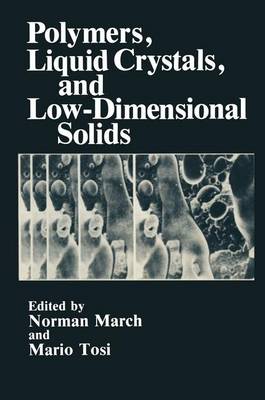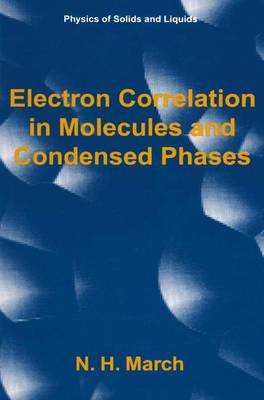Physics of Solids and Liquids
3 total works
This book deals with three related areas having both fundamental and technological interest. In the first part, the objective is to provide a bird's eye view on structure in polymeric solids. This is then complemented by a chapter, directly technological in its emphasis, dealing with the influence of processing on polymeric materials. In spite of the technological interest, this leads to some of the current fundamental theory. Part II, concerned with liquid crystals, starts with a discussion of the physics of the various types of material, and concludes with a treatment of optical applications. Again, aspects of the theory are stressed though this part is basically phenomenological in character. In Part III, an account is given first of the use of chemical-bonding arguments in understanding the electronic structure of low-dimensional solids, followed by a comprehensive treatment of the influence of dimen sionality on phase transitions. A brief summary of dielectric screening in low-dimensional solids follows. Space-charge layers are then treated, including semiconductor inversion layers. Effects of limited dimensionality on superconductivity are also emphasized. Part IV concludes the volume with two specialized topics: electronic structure of biopolymers, and topological defects and disordered systems. The Editors wish to acknowledge that this book had its origins in the material presented at a course organized by the International Centre for Theoretical Physics, Trieste."
This book had its origins in lectures presented at EPFL, Lausanne, during two separate visits (the most recent being to IRRMA). The author is most grateful to Professors A. Baldereschi, R. Car, and A. Quattropani for making these visits possible, and for the splendidly stimulating environment provided. Professors S. Baroni and R. Resta also influenced considerably the presentation of material by constructive help and comments. Most importantly, Chapters 4 and 5 were originally prepared for a review article by Professor G. Senatore, then at Pavia and now in Trieste, and myself for Reviews of Modem Physics (1994). In the 'course of this collaboration, he has taught me a great deal, especially about quantum Monte Carlo procedures, and Chapter 5 is based directly on this review article. Also in Chapter 4, my original draft on Gutzwiller's method has been transformed by his deeper understanding; again this is reflected directly in Chapter 4; especially in the earlier sections. In addition to the above background, it is relevant here to point out that, as a backcloth for the present, largely "state of the art," account, there are two highly relevant earlier books: The Many-body Problem in Quantum Mechanics with W.
The problem of molecules interacting with metal surfaces has for a very long time been recognized to be of considerable technological as well as fundamental importance. Thus in the former category, a substantial number of important synthetic reactions for industrial purposes make use of metal surfaces as catalysts. Or again, problems of corrosion of metals are of great practical importance, such as in nuclear-reactor technology [see, for instance, my earlier articles, in: Physics Bulletin, Volume 25, p. 582, Institute of Physics, UK (1974); and in: Physics and Contemporqry Needs (Riazuddin, ed. ), Vol. 1, p. 53, Plenum Press, New York (1977)]. It is therefore of significance to strive to gain a more fundamental understand ing of the atomic, and ultimately the electronic, processes that occur when a molecule is brought into the proximity of a metal surface. The present volume focuses mainly on the theory and concepts involved; however, it is intended for readers in chemistry, physics, and materials science who are not specialists in theory but nevertheless wish to learn more about this truly interdisciplinary area of theoretical science. The aim of the book is to present the way in which valence theory can be synthesized with the understanding of metals that has been gained over the last half century or so. While advanced theory has at times been necessary, is largely presented in an extensive set of Appendixes.


